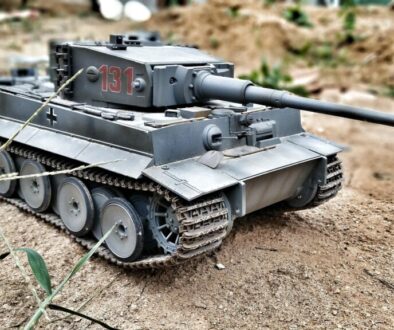The Science of Sweat: Unveiling the Most Effective Exercises for Weight Loss
I. Introduction
Exercise plays a crucial role in weight loss. It helps burn calories, build muscle, and boost metabolism. However, the effectiveness of exercise for weight loss depends on several factors, including the type of exercise, intensity, duration, and frequency. Different types of exercise can contribute to weight loss in various ways, and understanding these differences can help you create a more effective workout plan.
II. Cardiovascular Exercise
A. Benefits of cardio for weight loss
Cardiovascular exercise, or cardio, is excellent for burning calories and improving heart health. It increases your heart rate and breathing, helping you burn fat and lose weight.
B. High-Intensity Interval Training (HIIT)
HIIT involves short bursts of intense exercise followed by brief recovery periods. This type of workout can be very effective for weight loss, as it continues to burn calories even after the workout is over.
C. Steady-state cardio
Steady-state cardio involves maintaining a consistent level of effort throughout the workout. While it may not burn as many calories as HIIT, it’s easier to maintain for longer periods and can be a good option for beginners.
III. Strength Training
A. How strength training aids weight loss
Strength training helps build muscle, which increases your resting metabolic rate. This means you’ll burn more calories even when you’re not exercising.
B. Compound exercises vs. isolation exercises
Compound exercises work multiple muscle groups at once, making them more efficient for overall strength and calorie burning. Isolation exercises focus on single muscle groups and can be useful for targeting specific areas.
C. Resistance training frequency and intensity
For best results, aim to strength train 2-3 times per week, focusing on progressively increasing the weight or resistance as you get stronger.
IV. Combination Workouts
A. Balancing cardio and strength training
A well-rounded workout plan should include both cardio and strength training. This combination helps maximize calorie burn and muscle building.
B. Circuit training
Circuit training involves moving quickly between different exercises with little rest in between. This keeps your heart rate up while also building strength.
C. CrossFit and other hybrid workout styles
These workouts combine elements of cardio and strength training in high-intensity sessions, which can be very effective for weight loss.
V. Low-Impact Exercises
A. Swimming and water aerobics
These exercises provide a full-body workout without putting stress on your joints, making them great options for people with joint issues or injuries.
B. Yoga and Pilates
While not typically high-calorie burners, these exercises improve flexibility, build core strength, and can help reduce stress, which is important for weight loss.
C. Walking and cycling
These are accessible forms of cardio that can be easily incorporated into daily life and are suitable for most fitness levels.
VI. Tailoring Exercise to Individual Needs
A. Considering age and fitness level
Your exercise plan should take into account your current fitness level and any age-related considerations.
B. Addressing health concerns and limitations
If you have any health issues or physical limitations, it’s important to choose exercises that are safe and effective for you.
C. Lifestyle factors and time constraints
Your workout plan should fit into your daily life. Even short workouts can be effective if done consistently.
VII. The Role of Diet in Exercise-Based Weight Loss
A. Calorie balance and macronutrients
Weight loss ultimately comes down to burning more calories than you consume. Pay attention to your overall calorie intake and the balance of proteins, carbohydrates, and fats in your diet.
B. Pre and post-workout nutrition
Eating the right foods before and after your workout can help fuel your exercise and aid in recovery.
C. Hydration and its impact on weight loss
Staying well-hydrated is crucial for effective workouts and can also help with weight loss by reducing hunger and boosting metabolism.
VIII. Consistency and Progression
A. Establishing a sustainable routine
The best exercise plan is one you can stick to long-term. Start with a realistic schedule and gradually increase as you build the habit.
B. Overcoming plateaus
As your body adapts to exercise, you may need to change up your routine or increase intensity to continue seeing results.
C. Tracking progress and adjusting goals
Regularly monitor your progress and adjust your goals as needed to stay motivated and continue improving.
IX. Summary
Exercise is a key component of weight loss, but the most effective approach combines different types of exercise with a balanced diet. Remember that consistency is key, and it’s important to find activities you enjoy. Start where you are, progress gradually, and don’t be afraid to try new things. With patience and persistence, you can achieve your weight loss goals.
X. FAQs
A. How much exercise is needed for weight loss?
The CDC recommends at least 150 minutes of moderate-intensity or 75 minutes of vigorous-intensity aerobic activity per week, along with muscle-strengthening activities at least 2 days a week.
B. Can I lose weight with exercise alone?
While exercise is important, diet plays a crucial role in weight loss. For best results, combine regular exercise with a balanced, calorie-controlled diet.
C. How long before I see results from exercise?
This varies from person to person, but many people start to notice changes in their energy levels and fitness within a few weeks. Visible changes in body composition may take a few months of consistent effort.
D. Is it better to exercise in the morning or evening for weight loss?
The best time to exercise is when you can do it consistently. Some people prefer morning workouts to kickstart their metabolism, while others find they have more energy in the evening.
E. How do I stay motivated to exercise for weight loss?
Set realistic goals, track your progress, vary your workouts to prevent boredom, and find a workout buddy or join a class for accountability. Remember to celebrate small victories along the way.

